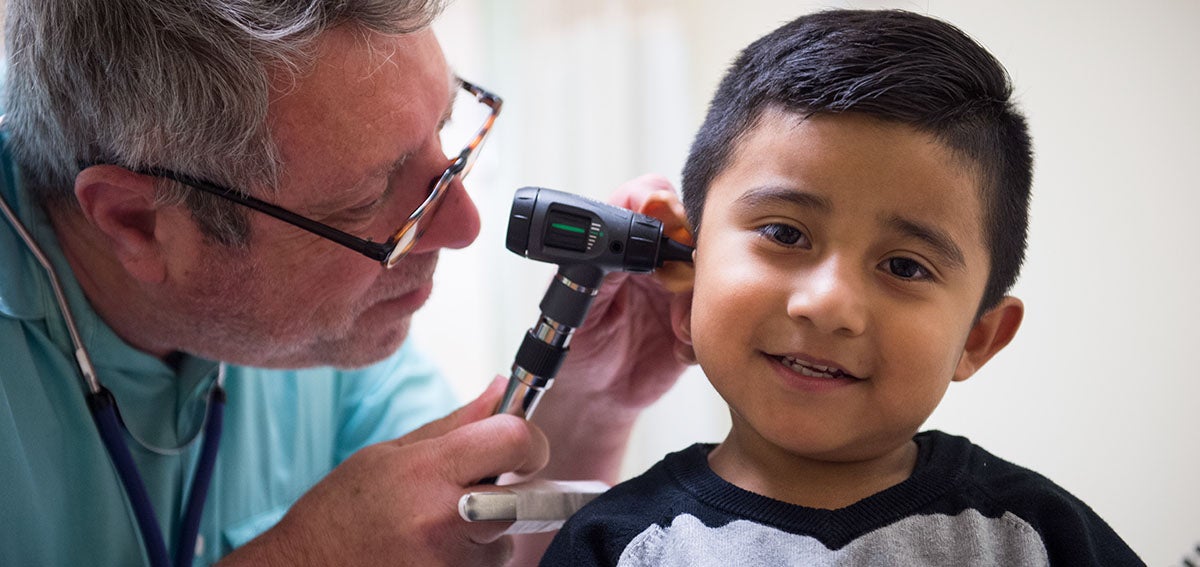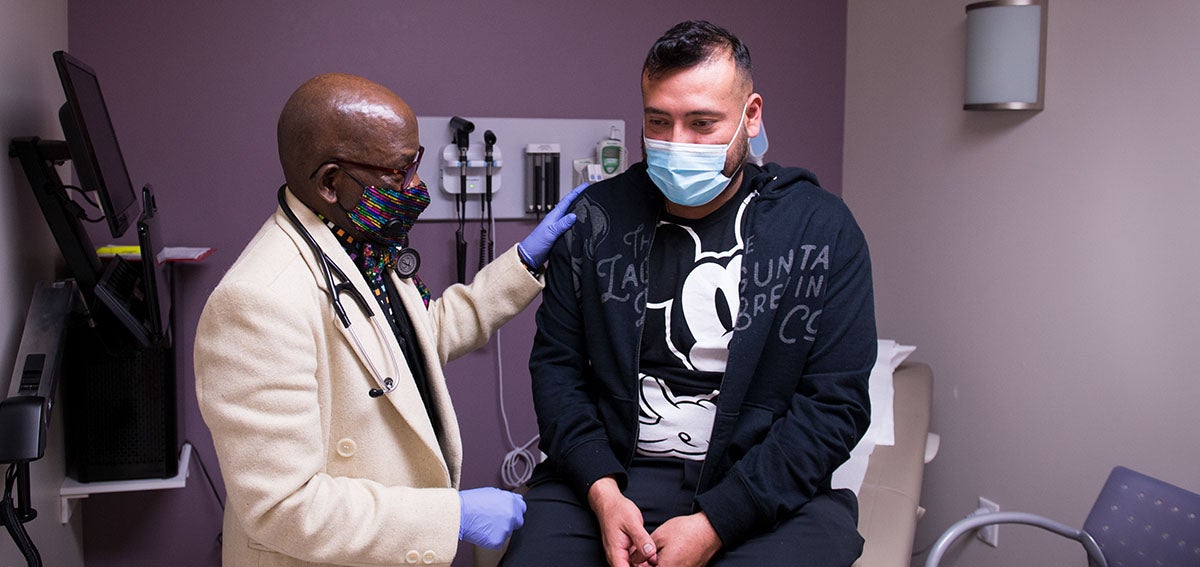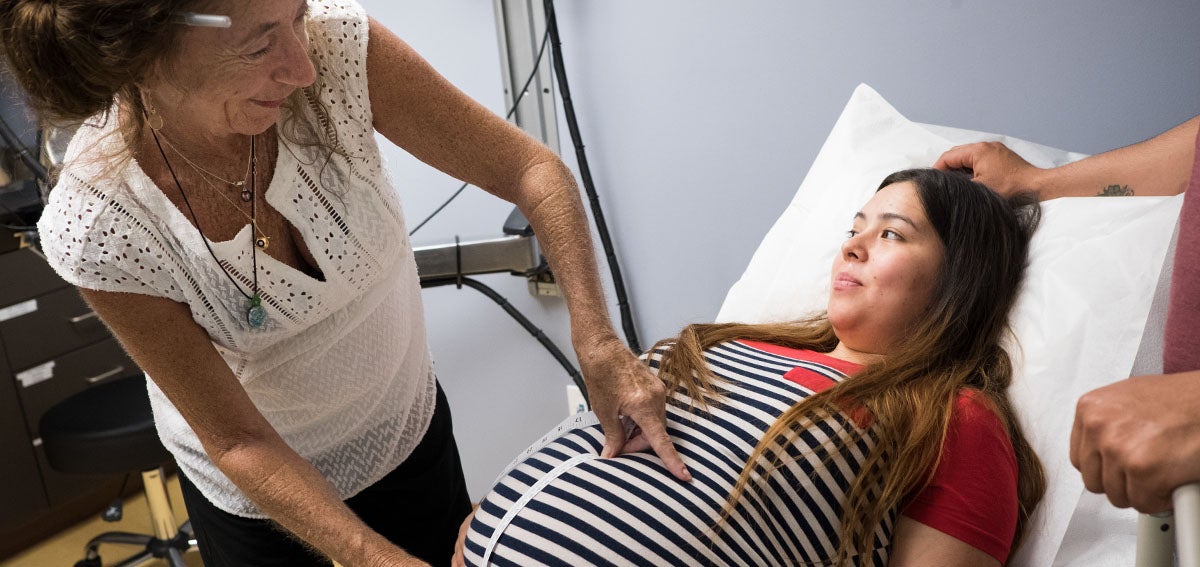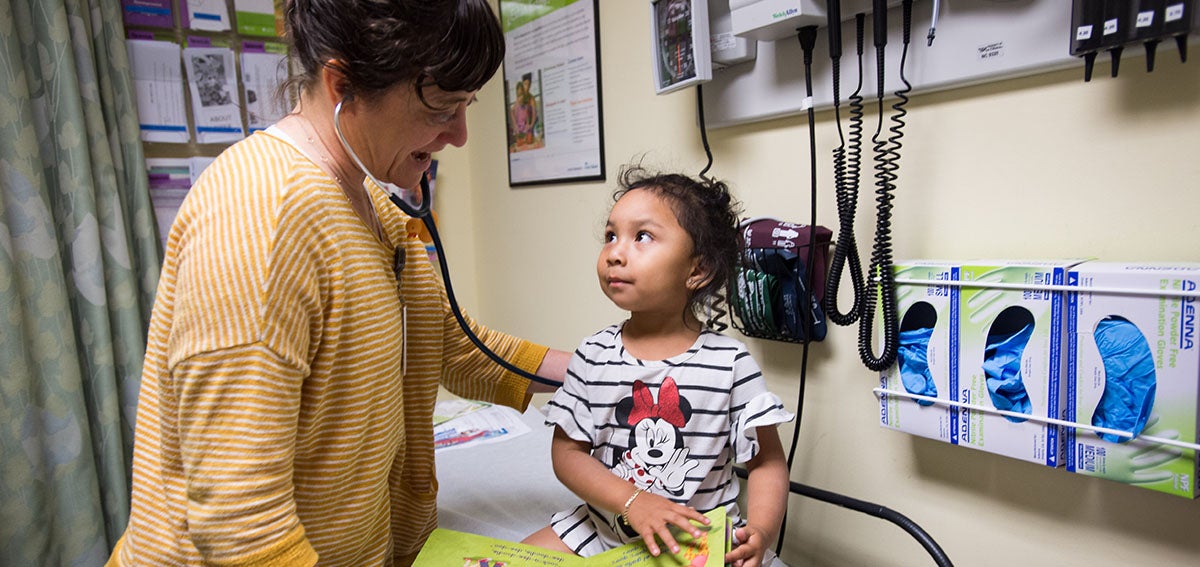
One of the biggest shifts in health care that occurred during the COVID-19 pandemic wasn’t about vaccines or masks or monoclonal antibodies. In fact, it wasn’t really about the SARS-CoV-2 virus at all. It was the dramatic growth of telehealth.
Between February and April 2020, telehealth visits for primary care, conducted either by phone or video, increased from zero to 148 visits per 1,000 patients at Federally Qualified Health Centers (FQHCs) in California, according to new research from the Santa Monica–based RAND Corporation. In contrast, in-person care dropped from about 230 to 65 visits per 1,000 patients during that time, RAND found.
By the summer of 2021, the number of in-person visits at California FQHCs had rebounded to 66% of primary care appointments, but telehealth still composed about one-third of visits. Telehealth is even more prevalent in the behavioral health care realm, with 72% of appointments conducted either by phone or video as of August 2021.
“We joke that a decade of telemedicine implementation happened in a week or two,” said Lori Uscher-Pines, a RAND senior policy researcher. “It was amazing how quickly health systems and individual providers were able to start offering telehealth visits.”
This rapid shift to telehealth is unsurprising, given the urgency of keeping patients and staff members safe during the pandemic. What remains to be seen is whether, once the dust settles and COVID-19 is deemed less of a threat, telehealth will be here to stay.
The findings of the RAND report suggest that while telehealth has a valuable role in increasing access to care, it should not serve as a blanket replacement for in-person visits. There were concerns over the efficacy of audio-only appointments, the difficulties in implementing video visits, and whether patients might be at risk of receiving inadequate care because of these technological challenges. As a result, a hybrid model, including in-person, video, and occasionally audio visits that caters to patients’ individual needs, would likely be the best approach, the researchers said.
Overcoming Barriers to Care
A strong argument in favor of telehealth is that virtual visits, both audio and video, enhance equity by increasing accessibility and flexibility for patients. “We look at the many barriers that patients face in getting care — geography, transportation, childcare, getting time off work, language,” said Chris Perrone, director of CHCF’s Improving Access team, which funded RAND’s research. “Telehealth makes it easier to see or talk with a physician without having to find childcare, take a day off work, or travel long distances.”
That expands access to care, Perrone said.
However, there are questions about whether the level of care offered in telehealth visits is as effective and as high quality as in-person visits. Also, some visits must be conducted in person because of the need for a physical examination or the collection of lab samples and biometric information.
Before the pandemic, one of the biggest concerns about telehealth services was the rising costs of that approach to providing care. “Telemedicine use was very restricted prior to the pandemic, both at the federal level and at the state level across the US,” Uscher-Pines said. “A big concern was that offering telehealth would increase costs without necessarily improving population health. That’s because telehealth is so easy to access and it’s so convenient that it would lead to extra utilization that was not necessary.”
Before the pandemic, Medicare and state Medicaid programs did not pay for telehealth visits except in specified situations. In March 2020, that policy quickly changed out of necessity. In March of this year, federal reimbursements for telehealth services were extended until at least the end of 2022 — and possibly longer — with the Consolidated Appropriations Act. In California, the Department of Health Care Services is committed to continue paying FQHCs for video and audio telehealth visits after the pandemic — covering all Medi-Cal covered benefits and services.
Perceptions of Telehealth
Facing this inflection point, CHCF commissioned several reports to assess the state of telehealth during the pandemic at California FQHCs, which serve people with low incomes and are primarily funded through reimbursements from Medicare and Medicaid.
An assessment (PDF) of 23 FQHCs’ implementation of telehealth during the height of COVID-19, found that 86% of providers were satisfied with the work they performed via telehealth and 84% would continue providing telehealth after the pandemic subsides.
A second report from RAND surveyed staff and providers at 45 FQHCs, public hospitals, and community health centers across the state, which serve a combined 1.7 million patients. It found that, overall, “Perceptions of whether telehealth provided an acceptable level of care were relatively positive, but perceptions of its sustainability — as well as perceptions of equity and quality of care — were nuanced.”
“With hybrid care models, patients can seek the care that works best for them.”
—Lori Uscher-Pines, RAND Corporation
Telehealth provided important access to care during the pandemic and helped patients overcome “barriers to in-person care, such as transportation,” the report found. However, there were concerns about “inequities in access, particularly for patients who were most affected by the digital divide.”
CHCF also funded other research that documents patient views on telehealth. A 2020 CHCF survey of people with low incomes found their telehealth visits compared favorably to in-person visits. Seventy-two percent of respondents who received care by phone were as satisfied or more satisfied. Of those who received care by video, 65% were as satisfied or more satisfied than with their last in-person visit.
Audio-Only Versus Video Visits
Health care workers’ biggest worry centered around phone versus video visits. Among the FQHCs that were part of RAND’s recent analysis, less than 5% of telehealth visits were conducted via video, despite their advantages over audio-only visits in many cases. As a result, a major emphasis has been on how clinics can expand access to video visits for their patients.
“Surveys suggest that providers generally prefer video visits,” said Uscher-Pines. “They get additional information — for example, just being able to see and visually examine the patient. Providers say they really like being able to see a patient’s home environment and for the patient to open up their medicine cabinet and show what’s in it.”
However, it’s also true that many patients don’t like video for this very reason — they don’t want to let providers into their homes, particularly if they haven’t developed a trusting relationship with the provider.
Neighborhood Healthcare in San Diego County and Zuckerberg San Francisco General Hospital (ZSFG) were two FQHCs that invested in video telehealth early in the pandemic. They reported that there were considerable growing pains in getting both patients and physicians to use the technology.
“It’s definitely been a learning experience working with different types of patients who are more tech savvy along with those who don’t know where the App Store is or what Wi-Fi is.”
—Amanda Churape, Zuckerberg San Francisco General Hospital
“What comes with integrating a new workflow is a lot of hesitancy, so our numbers were pretty low in the beginning,” said Amanda Churape, a specialty care program manager at ZSFG. “A lot of our providers and staff had actually never used Zoom or had never really had experience doing video, so there was a lot of training that needed to be done.”
Significant numbers of patients and providers did not have a Zoom-compatible device at all, she said.
“We started pushing very early on to go to video, and that was a challenge simply because those platforms, at that time, were just poorly developed,” said Jeffrey Glenn, chief operating officer at Neighborhood. “Our visits are 15 minutes apiece, so the providers would tell us, ‘I can’t spend 10 minutes trying to figure out how to connect the patient.’ And so early on, they would give up quickly and they would say, ‘I’m just going to call you.’”
Ramping Up Capabilities
To assist with the transition to remote provider visits, CHCF — which had funded projects working to expand use of the model even before the pandemic — launched the $6 million Tipping Point for Telehealth Initiative to help FQHCs ramp up their digital capabilities. The initiative included a learning collaborative on how to provide telehealth most effectively, dubbed the Connected Care Accelerator, as well as grants to enable clinics to invest in training and equipment.
Clinics were given flexibility in how they used the money as long as they applied it to expanding their telehealth capacity. Some of the clinics used the money to hire a specialized coordinator, like Churape, who oversees a team of telehealth ambassadors who help set up patients for video visits. First, the ambassadors screen patients to see if they have a device with a camera and access to Wi-Fi or an unlimited data plan. Then the ambassadors teach the patient how to download the application, join the meeting, and troubleshoot audio and video issues.
“It’s definitely been a learning experience working with different types of patients who are more tech savvy along with those who don’t know where the App Store is or what Wi-Fi is,” Churape said. “What took the most time is actually getting the patient onto the application, teaching them how to download the application, teaching them how to join a meeting.”
Other FQHCs, including Neighborhood, used the grant money to buy equipment like iPads and rolling workstations to provide virtual visits at their clinics. Medical assistants move the rolling video displays between exam rooms and queue up patient calls, allowing physicians to transition seamlessly back and forth between in-person and telehealth visits.
“A provider may be in Exam Room A seeing a patient in person, but then when they get done and walk into the next room, there may be a virtual patient sitting on the iPad,” Glenn said. “In the very beginning we felt like we need to have dedicated providers, like 100% telehealth or 100% in-person. Then we graduated to this hybrid model, which we are still employing today.”
Looking Ahead: A Hybrid Model of Care
Even with all the work they’ve put in, Neighborhood and ZSFG say most of their telehealth visits are still conducted via telephone. That may be because many of the populations the clinics serve face the greatest barriers to accessing care: the elderly, people experiencing homelessness, and people with limited English proficiency. Uscher-Pines worries that those patients, who are only able to obtain audio telehealth services, may be receiving lower quality care as a result.
“What’s a little bit concerning is that [these] patients are getting an untested service,” Uscher-Pines said. “It may be that audio-only visits are appropriate for many different use cases, but the literature just isn’t there yet to support when it’s appropriate and when it’s not.”
Given the advantages and drawbacks of telehealth, audio, and video, many providers are now calling for a hybrid model of care, offering a mix of in-person and virtual appointments depending on the patient and purpose of the visit.
“Telehealth quality is really complicated. The question is not ‘Does telehealth work?’ It’s ‘Does telehealth work for this patient population with this condition served in this setting?’” Uscher-Pines said. “With hybrid care models, patients can seek the care that works best for them.”
What’s clear from the RAND report is that the flexibility of telehealth is valuable for many patients and providers, with one-third of visits conducted virtually over a year into the pandemic. Making sure that these appointments, whether they are conducted by phone or video, are accessible, and are of the highest quality, will be critical in ensuring equitable care for patients who face barriers to in-person visits, even after the COVID-19 public health emergency is over.
Authors & Contributors

Dana G. Smith
Dana G. Smith, PhD, is a freelance health and science writer based in North Carolina. She has written for many publications, including Scientific American, Popular Science, Medium, The Atlantic, and The Guardian. Prior to pursuing a career in journalism, she earned a PhD in experimental psychology from the University of Cambridge.

Rafael López
Rafael López is an internationally recognized illustrator and artist. His illustrations bring diverse characters to children’s books, and he is driven to produce and promote books that reflect and honor the lives of all young people. Born and raised in Mexico City to architect parents, López was immersed in the rich visual heritage, music, and surrealism of his native culture.
He is a founder of the Urban Art Trail movement in San Diego’s East Village, where he created a series of large-scale murals that brought the community together. His murals can be found around the country in urban areas, at children’s hospitals, public schools, under freeways, and at farmer’s markets. He lives and works in an industrial loft in downtown San Diego and at his home/studio in the colonial town of San Miguel de Allende, Mexico.





